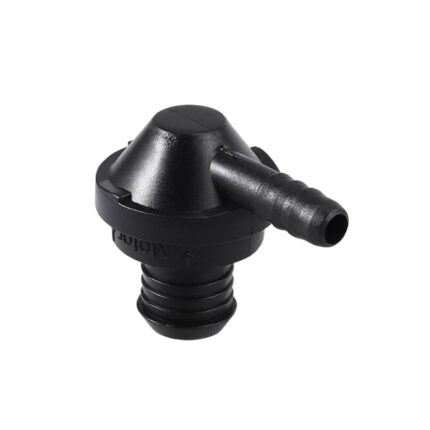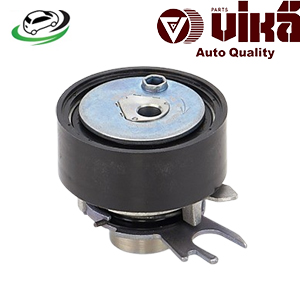Get AUDI A3 8P/ B7 A4/ Q7/ TT MKI/ TT MKII / VW 337/20AE/ CC/ Golf IV/ Jetta IV/ Passat B6/ R32 MKV/ Ignition Knock Sensor 030905377C
An ignition knock sensor is a critical device in modern engines that helps detect and manage engine knock or detonation. Knock occurs when fuel in the combustion chamber ignites prematurely, leading to abnormal combustion events that can damage the engine over time. The knock sensor plays a crucial role in protecting the engine from this damage by detecting knock and signaling the engine control unit (ECU) to adjust ignition timing and fuel mixture. In this 1000-word explanation, we will delve into the function, operation, benefits, maintenance, and troubleshooting of the ignition knock sensor.
1. What is an Ignition Knock Sensor?
The ignition knock sensor is a sensitive electronic device that detects vibrations caused by abnormal combustion (engine knock) in an internal combustion engine. It is typically mounted on the engine block, cylinder head, or intake manifold, where it can accurately sense the characteristic high-frequency vibrations that occur when knocking happens inside the combustion chambers.
This sensor is vital because knocking or pinging (pre-ignition) can lead to serious engine damage, including piston damage, overheating, and potential failure of engine components. Knock sensors are most commonly found in gasoline engines but are also used in some diesel engines to detect other abnormal combustion phenomena.
2. How Does the Ignition Knock Sensor Work?
The ignition knock sensor works by detecting vibrations within a specific frequency range, typically between 6,000 and 7,000 Hz. When knocking occurs, the resulting vibrations produce a sharp sound wave that the knock sensor detects.
The key components and operation of the knock sensor include:
- Piezoelectric Element: At the heart of the sensor is a piezoelectric element, a material that generates an electrical charge in response to mechanical stress or vibration. When engine knock occurs, the piezoelectric element vibrates and produces an electrical signal proportional to the intensity of the vibration.
- Signal Transmission to the ECU: The sensor transmits this electrical signal to the vehicle’s ECU (engine control unit), which processes it and determines if knock is occurring. If knock is detected, the ECU makes adjustments to prevent further knocking.
- Adjustment of Ignition Timing: In response to the knock signal, the ECU will typically adjust the engine’s ignition timing by retarding (delaying) the spark to prevent knocking. This adjustment allows the engine to run more smoothly and avoids the damaging effects of detonation.
- Fuel Injection Adjustments: In addition to adjusting the ignition timing, the ECU may also change the air-fuel mixture to reduce the likelihood of knocking, especially under high-load or high-compression conditions.
3. Causes of Engine Knock
Before exploring the benefits of the knock sensor, it’s important to understand what causes engine knock. Knock occurs when the air-fuel mixture in the combustion chamber ignites prematurely, before the spark plug fires. This can happen due to several factors:
- High Compression: In high-compression engines, the air-fuel mixture is more likely to ignite spontaneously due to the higher temperatures and pressures.
- Poor Fuel Quality: Low-octane fuels are more prone to premature ignition, causing knocking.
- Overheating: Engines that run hotter than intended can cause the air-fuel mixture to combust before the spark is introduced.
- Advanced Ignition Timing: If the engine’s ignition timing is too far advanced, the spark plug fires too early, leading to premature combustion.
- Carbon Deposits: Over time, carbon deposits can accumulate in the combustion chamber, effectively raising the compression ratio and increasing the risk of knock.
4. Benefits of the Ignition Knock Sensor
The knock sensor offers multiple benefits, both in terms of engine protection and performance enhancement:
- Engine Protection: The primary function of the knock sensor is to protect the engine from the damaging effects of detonation. Knocking can cause excessive heat, piston damage, and even catastrophic engine failure if left unchecked.
- Improved Engine Efficiency: By detecting and preventing knock, the knock sensor allows the ECU to optimize the engine’s ignition timing and fuel mixture, resulting in better fuel efficiency and smoother operation. The engine can run closer to its ideal ignition timing without the risk of knocking.
- Enhanced Performance: With the ability to make real-time adjustments to ignition timing, the engine can achieve a higher level of performance, particularly in high-compression engines or under heavy loads.
- Emission Control: Knock sensors help reduce emissions by ensuring that combustion occurs at the optimal time, leading to more complete combustion and lower levels of unburned hydrocarbons.
- Versatility Across Fuel Types: The knock sensor allows engines to adapt to different fuel grades. If a driver uses lower-octane fuel than recommended, the sensor detects any knock and prompts the ECU to adjust, preventing damage even with suboptimal fuel.
5. Types of Ignition Knock Sensors
There are two primary types of knock sensors used in vehicles:
- Resonant Knock Sensors: These sensors are tuned to detect vibrations within a narrow frequency band that corresponds to knocking. They are effective but less flexible, as they may miss knocking events that occur outside their frequency range.
- Wideband Knock Sensors: These sensors can detect a broader range of frequencies, making them more versatile in detecting different types of abnormal combustion. Most modern vehicles use wideband knock sensors due to their enhanced sensitivity and accuracy.
6. Symptoms of a Faulty Ignition Knock Sensor
A failing knock sensor can lead to various engine problems. Some common symptoms include:
- Engine Pinging or Knocking Sounds: If the knock sensor is not working properly, the ECU won’t be able to detect knocking, allowing it to persist, often resulting in audible knocking or pinging sounds from the engine.
- Decreased Performance: Without knock detection, the ECU may be forced to run the engine in a more conservative mode, reducing ignition timing to prevent potential knock. This can lead to noticeable decreases in performance and acceleration.
- Poor Fuel Efficiency: A malfunctioning knock sensor can cause the engine to operate less efficiently, resulting in higher fuel consumption.
- Check Engine Light: The vehicle’s onboard diagnostic system will often trigger a check engine light if the knock sensor fails or sends faulty signals.
- Increased Emissions: A bad knock sensor can cause the engine to run rich (with excess fuel), leading to higher emissions of pollutants like hydrocarbons and carbon monoxide.
7. Maintenance and Replacement of the Knock Sensor
While knock sensors are generally reliable, they can fail over time due to exposure to heat, vibration, and contaminants. Proper maintenance can help ensure their longevity:
- Regular Inspection: During routine maintenance, the knock sensor’s wiring and connectors should be inspected for any signs of damage or corrosion.
- Sensor Location: Knock sensors are often located in hard-to-reach areas, such as under the intake manifold or near the engine block. Care should be taken when accessing them to avoid damaging surrounding components.
- Replacement: If the knock sensor is faulty, it should be replaced as soon as possible to prevent engine damage. Replacing a knock sensor involves disconnecting the old sensor, removing it from the engine block, and installing a new one. It is recommended to follow the vehicle manufacturer’s guidelines for sensor replacement intervals.
8. Common Misconceptions
- Only Performance Cars Need Knock Sensors: While high-performance and turbocharged engines benefit from knock sensors, all modern gasoline engines, including economy cars, rely on knock sensors to maintain optimal engine performance and emissions control.
- Knock Sensors Can Eliminate Engine Knock: While the knock sensor plays a key role in detecting and preventing knock, it cannot eliminate knock if the engine is improperly tuned, using the wrong fuel, or experiencing mechanical issues.
Conclusion
The ignition knock sensor is an indispensable component in modern internal combustion engines. By detecting engine knock and signaling the ECU to adjust ignition timing and fuel injection, it protects the engine from damage, enhances fuel efficiency, and ensures optimal performance. Regular inspection and timely replacement of the knock sensor help maintain engine reliability and prevent costly repairs.
Follow us on Facebook for more parts.




Reviews
Clear filtersThere are no reviews yet.